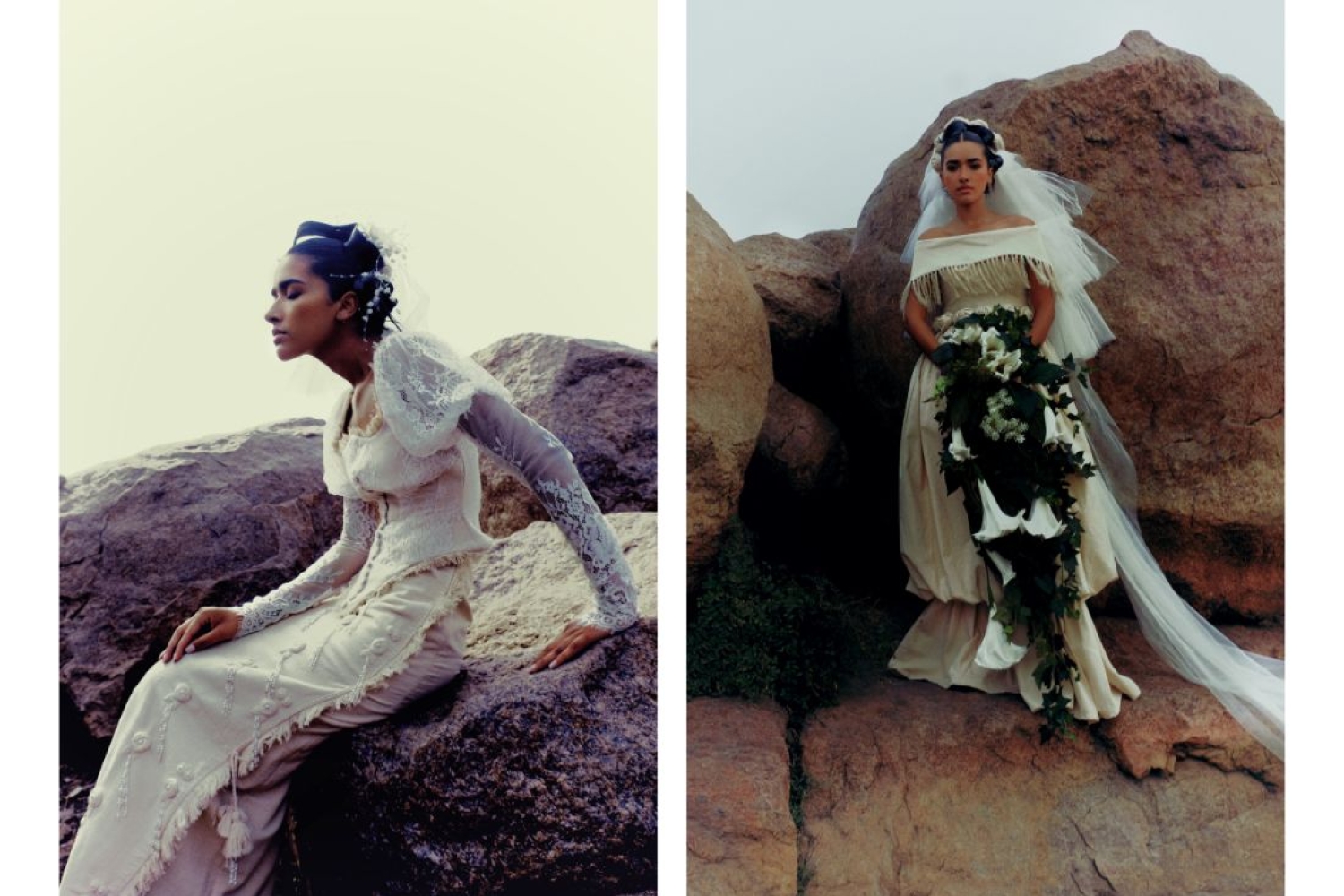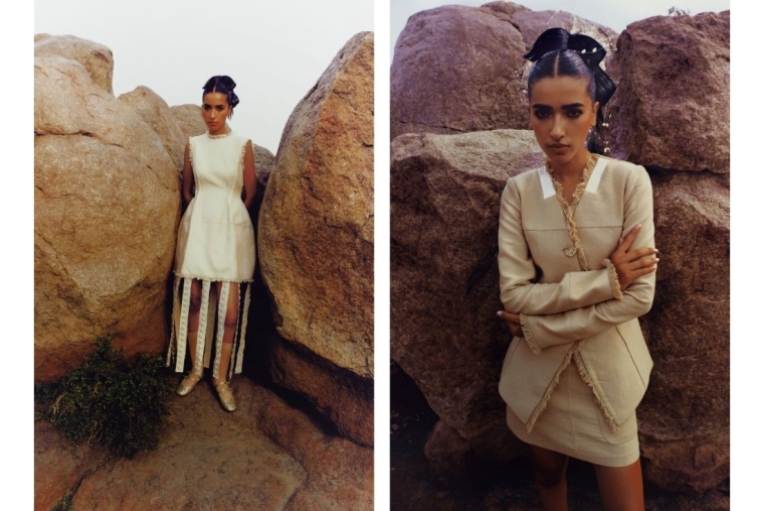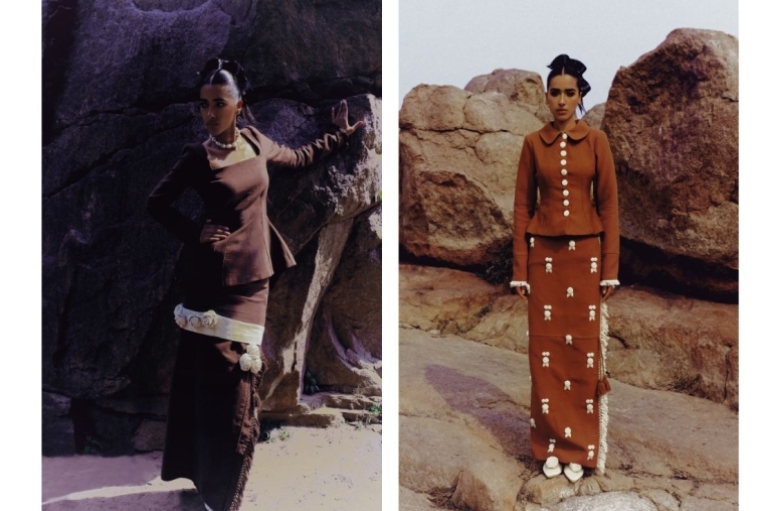

Can you talk about the starting point for the new collection? The branding and aesthetics seem new and reimagined.
The starting point for Rahbi Thar was the idea of transformation—of both craft and identity. I wanted to create a collection that honors our indigenous Zo textiles while reimagining how they exist in today’s world. The branding and aesthetics have naturally evolved to reflect this shift. While my previous work has always drawn from tradition, Rahbi Thar feels like a bold step forward, blending heritage with contemporary energy. The collection is rooted in classic craftsmanship but carries a rebellious spirit, much like the new generation of Mizo women who embrace both their roots and their individuality.

What were the inspirations?
Rahbi Thar draws from a mix of influences—both cultural and personal. Mizoram’s rich textile heritage was, of course, the foundation. But beyond that, I was inspired by contrasts: tradition versus modernity, structure versus fluidity, boldness versus restraint. British rock culture also played a role in shaping the collection’s attitude. There’s something powerful about the way music, fashion, and rebellion come together, and I wanted to channel that spirit into the collection. At its heart, though, Rahbi Thar is inspired by Mizo women—our strength, resilience, and the way we navigate change while staying true to who we are.
Who would you describe the collection is for?
This collection is for women who embrace duality—those who appreciate heritage but aren’t afraid to break convention. It’s for women who see fashion as a form of self-expression, who want their clothing to carry meaning and history while still feeling fresh and modern. Whether it’s a bride who doesn’t connect with the conventional delicate gown, or a woman redefining power dressing with a structured puan suit, Rahbi Thar speaks to those who seek strength in their identity.

How would you describe the journey of preserving indigenous crafts? How challenging was it?
Preserving indigenous crafts is both an honor and a challenge. The biggest challenge has been striking a balance between staying true to tradition and making these textiles relevant in today’s fashion landscape. There’s also the responsibility of ensuring that artisans—especially the Mizo women who weave these fabrics—are supported and given the recognition they deserve. The craft itself is deeply personal to our culture, but sustaining it requires adapting to changing consumer needs. Despite the challenges, the journey has been incredibly fulfilling. Seeing Zo textiles find a place on the global stage, and knowing that we’re keeping these techniques alive for future generations, makes every hurdle worth it.
Words Hansika Lohani
Date 27.03.2025